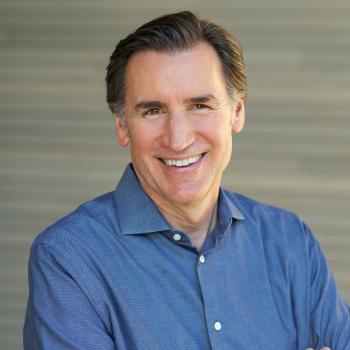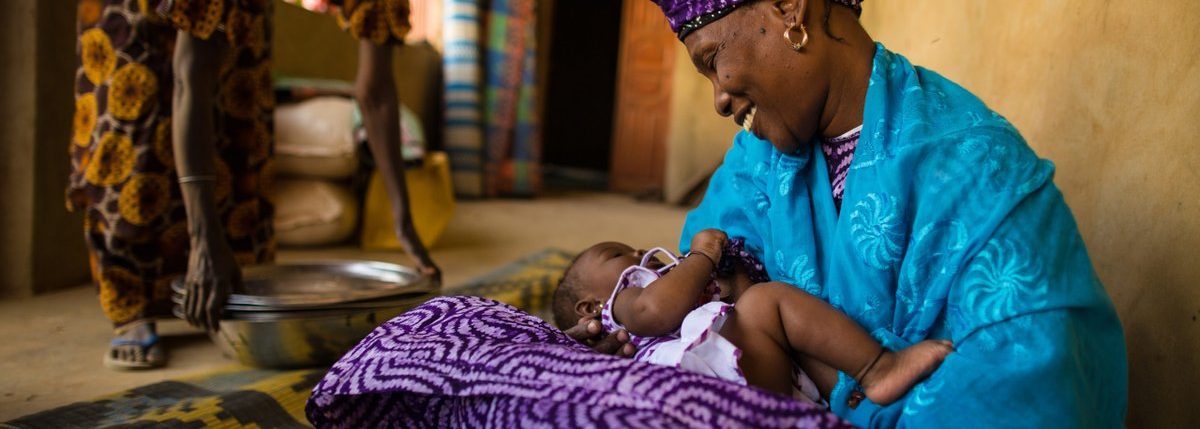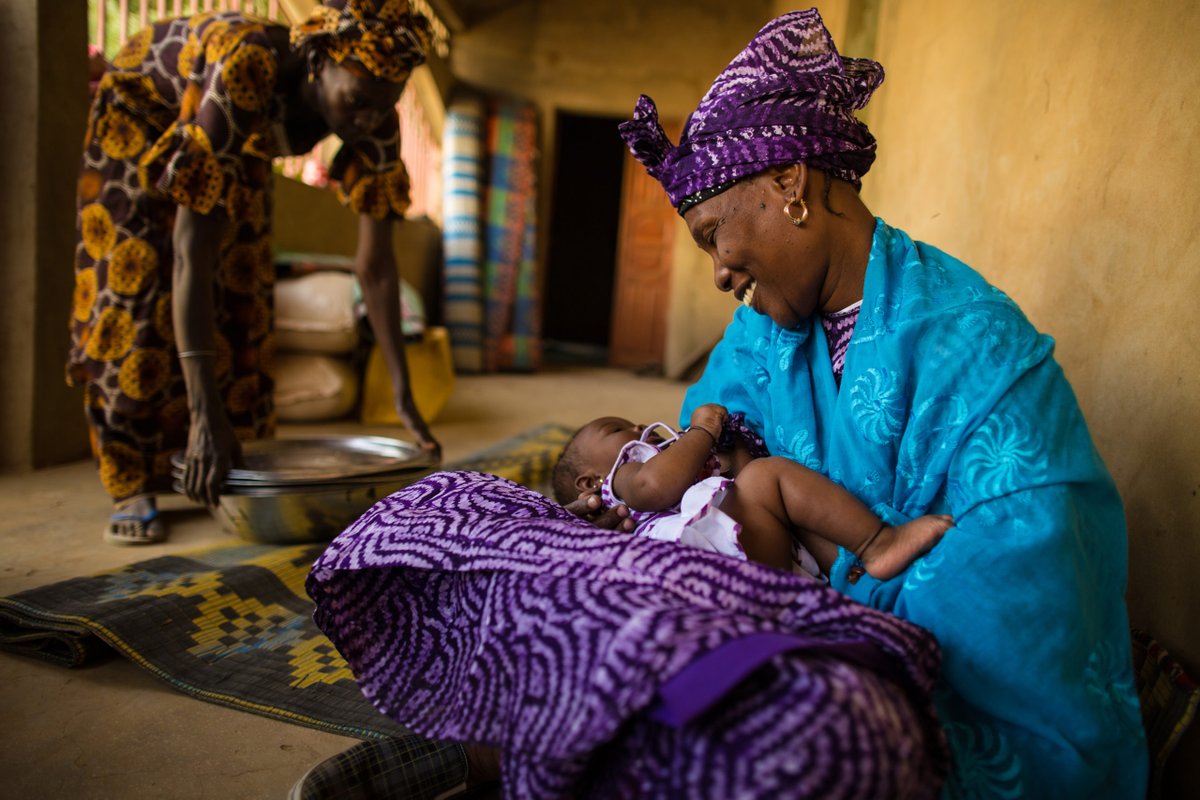Published: 03/04/2022
The average newborn has a much better chance of surviving today than she did 30 years ago, thanks to advances in science and medicine. Between 1990 and 2020, the infant mortality rate decreased significantly from an estimated 65 deaths per 1,000 to 27.4. Despite this progress, 75% of all under-five deaths occur in the first year, and stark inequalities remain. Countries like Canada see just four deaths per 1,000 live births, while Chad sees 67 — an indication of how many young lives could be saved if these inequalities were addressed.
By Jamie Hansen

Gary L. Darmstadt MD, MS, is a global leader in health equity, maternal and child health, and gender equality who has focused much of his career on reducing inequalities in service of increasing infants’ survival, health, and development around the globe.
Dr. Darmstadt is a member of the Center for Innovation in Global Health’s core leadership team, advising on maternal and child health, Associate Dean for Maternal and Child Health, and Professor of Neonatal and Developmental Medicine in the Department of Pediatrics at the Stanford University School of Medicine.
We sat down to speak with him about what gives him hope – and work that remains to be done.
Big picture, what gives you hope about global progress toward infant survival?
Newborn deaths are getting more attention globally. You noted that three-fourths of under-five child deaths occur in the first year; well, about half of all child deaths occur in the first month – the neonatal period. I have focused a lot over my career on developing and introducing interventions to avert these early deaths.
Early on, I worked to understand the causes of newborn deaths and to identify existing interventions that were effective. Since then, many effective interventions have been identified. Now, programs to deliver some of these interventions are rolling out at scale, and are making a difference. Helping Babies Breathe is one example. This program addresses newborn deaths due to birth asphyxia by equipping providers with the knowledge, skills, and practice to resuscitate infants at the time of birth. This is an intervention where you have to be there and respond immediately. Having a supportive system in place and training which equips providers to respond appropriately is critical in these moments. The American Academy of Pediatrics and other partners have been engaged in a big effort to roll out effective training and support in a number of countries. I think we’re going to see many newborn lives saved through this initiative.
Another major global initiative is training community health workers in the recognition of sick newborns whose illness may be due to a serious infection. This is another situation where identification of the sick newborn and initiation of effective treatment has to happen quickly. We’re at a place where we have good evidence for what can be done, including the effectiveness of community health workers in recognizing distressed infants and referring them for treatment, or treating them in situations where referral is not possible. The World Health Organization (WHO) is working on how to translate this evidence into action in countries around the world, which requires global guidelines, national policies, large scale programming, and monitoring and evaluation of program coverage, quality and impact. This is all getting lined up and integrated into broader programs for Essential Newborn Care and Small and Sick Newborn Care. This is another exciting development that is sure to save many lives.
Where does the global health community need to focus its attention next?
The single largest burden of deaths in children before their fifth birthday is complications of preterm birth. We are on the verge of making major advancements in understanding the origins of preterm birth, leading to improved ability to prevent preterm births from happening.
Some of the really exciting work happening now seeks to understand what is going on biologically – for example metabolically, immunologically, microbiologically – to trigger preterm birth in the first place. And if we can understand those basic processes better, we can come up with more precise and effective interventions to prevent preterm birth. There is a lot of work going on in this area. The Prematurity Research Center at Stanford is making great progress in looking at signals in these various multiomic domains, and considering them together, which turns out to be even more powerful.
It’s really a revolution in the making in our ability to understand ahead of time which pregnancies and babies are on a healthy trajectory and which are not, which begins to open the door for intervening earlier, more effectively and in a more tailored manner.
We’re making progress on averting the deaths of babies who are born preterm as well. I’m leading the Preterm and Low Birth Weight Infant Global Guidelines Development Group at the WHO in assessing the evidence for what works, and we are making a number of new recommendations that will come out later this year. We have evidence for many ways to help preterm babies survive and thrive.
For instance, Kangaroo Mother Care (KMC) is being scaled up globally as a key means of improving the survival, health and wellbeing of infants born preterm. KMC is the natural practice of the newborn remaining with his/her mother in skin-to-skin contact and benefitting from her warmth, heartbeat, emotional connection, and much more. The use of this approach can reduce mortality of preterm infants by about 30-35 percent.
We’ve actually known about its effectiveness for a number of years and yet it’s been challenging to scale up the practice around the globe. In recognition of this, the WHO has convened a working group, which I am co-chairing, composed of major partners involved in scaling up this care. We aim to catalyze major new actions to implement KMC globally for care of preterm infants.

Can you tell us more about what you think can be done to catalyze the use of Kangaroo Mother Care globally? What has prevented its uptake so far?
I believe in science and technology, but I also believe in the power of humanity – the power of human touch and care, and particularly the power of mothers in caring for their newborn infants.
Unfortunately, KMC has been stigmatized in many places as something that’s only for poor people who can’t afford access to technology such as an incubator. There’s this perception that technology – an incubator – is superior. In fact, we’ve found that the mother’s own warmth, her heartbeat, touch, bonding, the comfort of her closeness, and likely other biological processes and signals from her, such as transfer of her microbiome to her infant, are life-promoting in ways that incubators, or machines, cannot provide.
There’s recent evidence around what it takes to implement KMC effectively. It really comes around to the need to rethink how our health systems are constructed to support the kind of care that we know works. It’s beyond empowering the mother and giving her health providers information about KMC; it’s about recognizing the mother’s rightful place as the most important and powerful provider of care for her baby.
When you have obstetric care in one place, and care for preterm infants in another, doing something like KMC becomes difficult. But the benefits are significant. New evidence shows that even sick preterm babies, babies not yet medically stable, can have their risk of mortality decreased by 25% by receiving KMC compared to incubator care.
Infrastructure and provider training are critical components, but you really have to look at the whole system and all its building blocks (e.g., leadership and governance, workforce, service delivery, supplies, health information systems, financing) to ensure that the mother is at the center of the infant’s care and the entire ecosystem supports them in being together. This calls for a fundamental shift in maternal and child health system design.

Another promising intervention for low-weight babies is something called emollient therapy, which you’ve studied extensively in various countries. Can you describe your recent findings about how the traditional practice of massaging preterm and low-weight babies with oil, in particular sunflower oil, can help them survive, stave off infection, and gain weight?
My interest in this stems from my training in pediatrics and dermatology, recognizing that the skin is really important to our health. Preterm babies have very immature skin that hasn’t developed into an effective barrier: Massive amounts of water, heat, and energy can escape through the skin, at the same time that pathogens are able to get in and cause serious infections. We know that preterm infants need special feeding and special care for their lungs, but somehow we don’t take the skin as seriously.

At the same time, I saw that, in traditional newborn care throughout many places in the world, families are applying things to the skin of infants, including preterm infants. So we began to study why and what was being applied and found that the large majority of products being applied, such as mustard seed oil in South Asia, were probably harmful – we found evidence of toxic effects on the skin barrier in mouse models of infant skin. On the other hand, based on the science of skin barrier formation, we knew the components – the lipids – that could comprise an effective skin barrier promoting product, so we began to study them. We found that not only does sunflower seed oil have a desirable composition that helps the maturation and the function of the skin as a barrier; it has essential fatty acids that can be absorbed through the skin to aid nutrition.
In our recent community-based clinical trial in India, one key finding was that very low birth weight infants who received this therapy experienced a 52% lower rate of mortality along with improved weight gain.
You’ve highlighted some powerful new approaches to improving outcomes for the world’s most vulnerable babies, some of them resurfacing time-tested practices and others featuring cutting-edge, possibly game-changing technology and discoveries. How do we translate the latter to benefit infants and mothers in parts of the globe that may not have access or systems to support such technologies?
Technology can widen inequality or lessen it. It depends on how you design the technology to fit into health systems and also how you shape systems to accommodate the introduction of technologies that can transform our ability to provide effective care.
These are really important questions that we need to think about even as we’re discovering and developing potential interventions, so that we can move toward developing them in a way that they are acceptable, feasible, affordable and equitable when introduced. For example, previous research has shown that by measuring a small number of metabolites in urine, we can identify women likely to develop preeclampsia. Once you know that, you can start thinking, how do I make this information available to somebody with limited technology? Maybe they have a cell phone, so could we develop technology that translates urine metabolic information into a message on a cell phone? That could go a long way toward using this exciting new technology to drive greater health equity,
In another case, we just completed a study on the feasibility of using infant blood spots to determine the metabolic profile and gestational age of the baby. To do the study, we had blood spots shipped from the participating countries to our collaborators at the University of Ottawa, where the metabolic analysis was done. It was very important to get the findings back to the home country in a timely enough manner for any congenital conditions we discovered to be acted upon, to preserve the health of the baby.
You begin to think, how could that information be obtained and used regionally and what cultural, equity, economic and systemic considerations do we need to keep in mind in order to make this innovation available to all people in all places? Scientists, policy makers, program managers, and funders need to be working together to think about how we most effectively translate technology into impact in people’s lives.
Header Photo by Morgana Wingard, USAID

